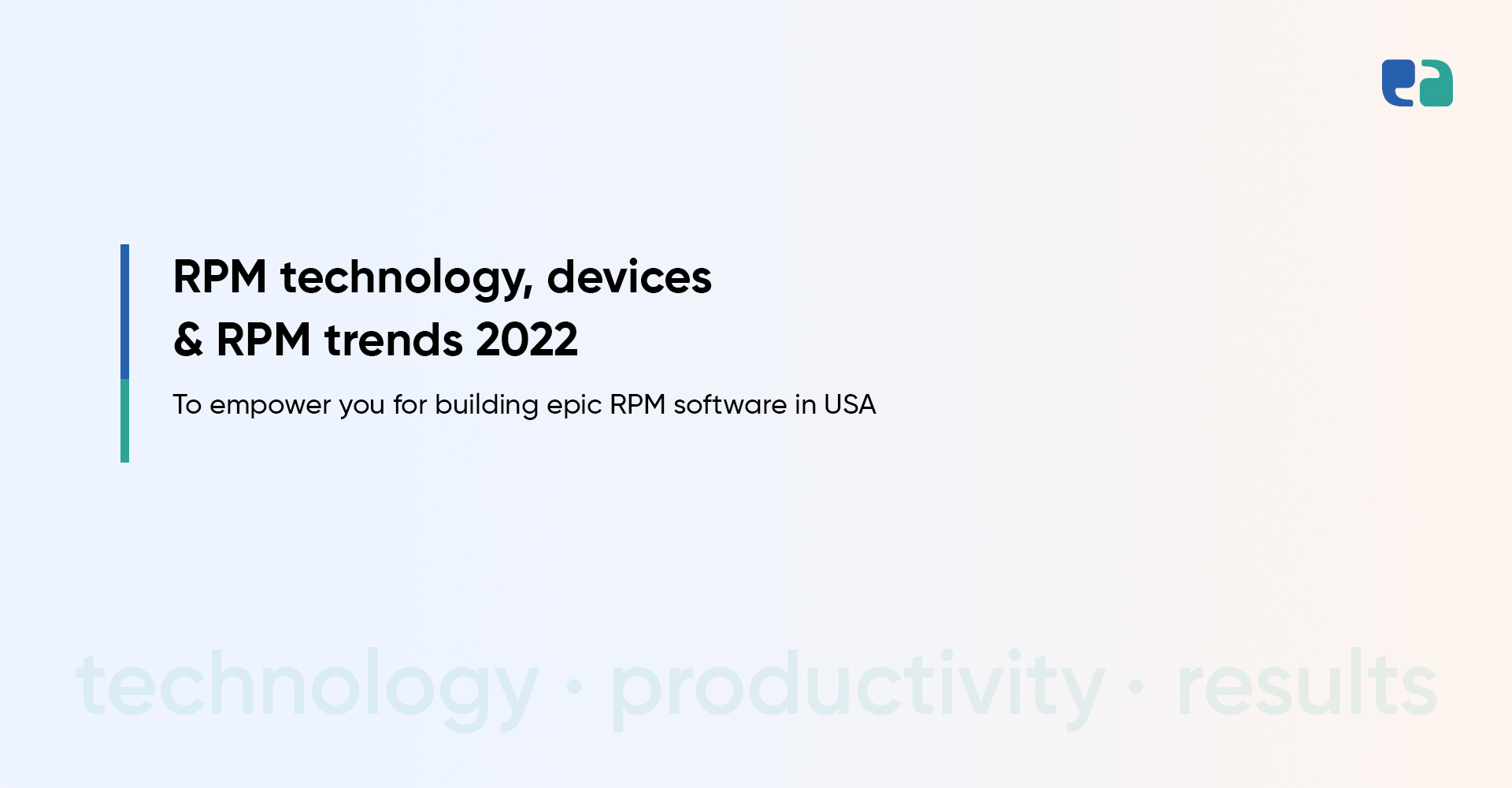Quick Summary: RPM has been around since 1960 but it recently came into the spotlight due to factors such as the growing need for remote monitoring devices, availability of mobile devices, and wearable sensors.
In the pandemic era, remote patient monitoring technologies have experienced a huge adoption among the people and practitioners.
A recent report on the mHealth sector estimated that 3 million patients will be monitored on the mobile networks in the next four years.
This article demonstrates remote patient monitoring software, devices, and top market trends.
What is remote patient monitoring software technology?
RPM technology is the most effective form of virtual care that helps medical practitioners to monitor and manage chronic diseases outside of the traditional clinical setting. The technology uses sensors, mobile devices connected with wifi, local data storage at the patient’s site, a centralized repository, and APIs.
Depending on the disease, and the parameter that is needed to be monitored, different combinations of sensors, data storage, and APIs may be deployed.
Evolution in remote patient monitoring devices, wearable sensors and mobile devices
Traditionally, the devices used for patient monitoring were restricted to the clinical environment. Also, the size and cost of such equipment added limitations to its use.
Now, with technological advancement, such remote patient monitoring devices are getting affordable and lightweight. Moreover, other technologies such as IoTs are enhancing the capabilities of RPM by allowing devices to communicate with each other.
How do wearable devices work for remote patient monitoring software systems?
Wearable devices are connected with smartphone applications, they transmit and collect health data directly to the remote monitoring platform or healthcare service providers. Here patients do not need to check or track their own vital signs and feed them manually in the database, everything is done automatically.
Wearable devices connected with remote patient monitoring software gather a treasure of information related to patient health and treatment which is used to draw meaningful insights about patients’ health.
The global remote patient monitoring market is expected to reach USD 117.1 billion by 2025 from USD 23.2 billion in 2020 at a CAGR of 38.2%.
What is the role of IoT technology in remote patient monitoring solution?

IoT (Internet of things) is in the center of remote patient monitoring solution. It enables any hardware device to establish link with software and communicate with it. The best example of IoT-enabled device is a wi-fi camera which allows users to remotely access camera (hardware) from mobile app (software).
Similarly, in the case of medical IoT devices such as smart oximeter, it lets users operate and read data collected by oximeter from the mobile app. The smart oximeter is equipped with IoT module which is responsible for setting up the bi-directional communication using MQTT protocol with software and process the commands given by users through that software.
However, the major challenge is compatibility. Both software and hardware aren’t made for each other. Thus, there are several by-default issues regarding accuracy and efficiency. It is IoT developers’ responsibility to make sure mobile IoT software and IoT hardware are compatible with each other.
Remote patient monitoring trends or IoT in healthcare trends in the USA
The past year has proven to be a banner year for remote patient monitoring technology and it will continue to grow in the future due to growing health awareness, affordable wearable devices, and advanced remote monitoring systems.
So let’s explore what will be the remote monitoring trends in 2022.
How can we help you build remote patient monitoring software working on IoT technology?
If you think it’s time to empower your healthcare with RPM, we are here to help you!
We are a healthcare-focused IT Company with expertise in enterprise healthcare documentation, consulting, app designing, custom product development, testing, compliance integration, maintenance, and support.
The healthcare industry is already focusing on value-based care! Are you in?
The healthcare industry has started investing in value-based care using telehealth services equipped with modern technology including RPM. Their ultimate goal is to reduce readmission rates for hospitals through the RPM-enabled home health monitoring system and other strategies.
Even if you are starting from scratch, our team of experts will guide you starting from the creation of specification documents, UI/UX design, prototyping, MVP development and QA testing.
We assure the quality, by constantly working on the feedback and their implementation, through operational improvement and implementing efficient technologies.
Start investing in RPM to drive your healthcare services with us!




